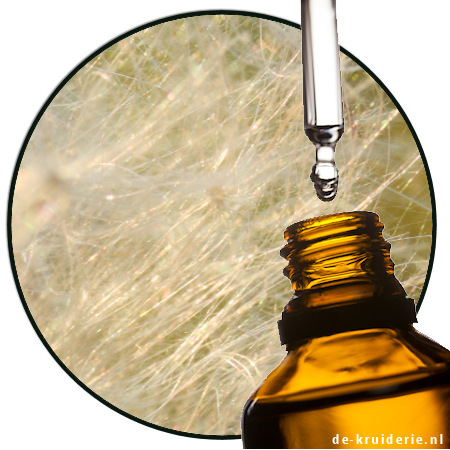

Green Lavender Absolute
Botanical name: Lavandula angustifolia absolute
CAS: 8000-28-0
Origin : France
Extraction method : Solvent extraction of the flowers
Appearance : Dark green to blue-green, viscous liquid
Fragrance profile : spicy, floral, sweet hay-like, coumarin notes, slightly fruity and warm
Fragrance group : Floral
Uses : heart note in perfumes such as fougere, chypre and woodsy accords. Blends well with labdanum, vetiver, patchouli, oakmoss, citrus and salicylates
Dosage : 0.1 to 8% in fragrance compositions
Fragrance strength : It’s not overpowering, but certainly not subtle either, the rich, spicy, hay-like scent lingers well.
Stability : Good resistance to soap and alcoholic carriers
IFRA : no restrictions
1st Class Quality Products
All fragrances are selected with care
Delivery from stock
We supply everything from our own stock, unless otherwise stated on the product itself.
Green Lavender Absolute — also known as Lavender Absolute or Lavandula angustifolia absolute — is an intensely aromatic extract that captures the true essence of lavender, but with a green, spicy, and hay-like depth not found in the essential oil.
Why “Green”?
- Color: The absolute is a deep green to blue-green viscous liquid, unlike the pale hues of lavender essential oil. This vibrant tone comes from the solvent extraction process, which pulls out more pigment and heavier aromatic compounds from the flowers.
- Aroma: It has a greener, more herbaceous scent than typical lavender oil — think sweet hay, coumarin warmth, and a touch of forest floor. This “green” character is what perfumers often refer to when describing its deeper, earthier vibe.
Why “Absolue”?
- “Absolue” (or absolute) means it’s made via solvent extraction, not steam distillation. This method captures a fuller spectrum of aromatic molecules, resulting in a richer, more complex scent.
So in short: it’s called Green Lavender Absolue because it’s a green-colored, richly aromatic extract of lavender that smells more like the whole plant — leaves, stems, and all — rather than just the floral tops.
IFRA Restricted Materials / Beperkte Stoffen / Eingeschränkte Stoffe
| Ingredient Name | CAS | Conc. (%) | NL Naam | DE Name |
|---|---|---|---|---|
| 1-Octen-3-yl Acetate | 2442-10-6 | 0.7000 | 1-Octen-3-yl Acetaat | 1-Octen-3-ylacetat |
| Benzaldehyde | 100-52-7 | 0.0050 | Benzaldehyde | Benzaldehyd |
| Benzyl Alcohol | 100-51-6 | 0.0500 | Benzylalcohol | Benzylalkohol |
| Benzyl Benzoate | 120-51-4 | 0.0500 | Benzylbenzoaat | Benzylbenzoat |
| Benzyl Salicylate | 118-58-1 | 0.0200 | Benzylsalicylaat | Benzylsalicylat |
| Citral | 5392-40-5 | 0.0010 | Citral | Citral |
| Coumarin | 91-64-5 | 10.0000 | Coumarine | Kumarin |
| Eugenol | 97-53-0 | 0.0300 | Eugenol | Eugenol |
| Farnesol | 4602-84-0 | 0.0010 | Farnesol | Farnesol |
| Geraniol | 106-24-1 | 0.0010 | Geraniol | Geraniol |
🚫 IFRA Prohibited Material / Verboden Stof / Verbotener Stoff
| Ingredient Name | CAS | Max. Allowed (%) | NL Naam | DE Name |
|---|---|---|---|---|
| 7-Methoxycoumarin | 531-59-9 | 8.0000 | 7-Methoxycoumarine | 7-Methoxycumarin |
🔍 Note: All listed concentrations represent the maximum allowed levels according to IFRA guidelines for categories involving skin contact (such as perfumes or lotions). For any specific application, you must verify your formula against the most recent IFRA Amendment.











